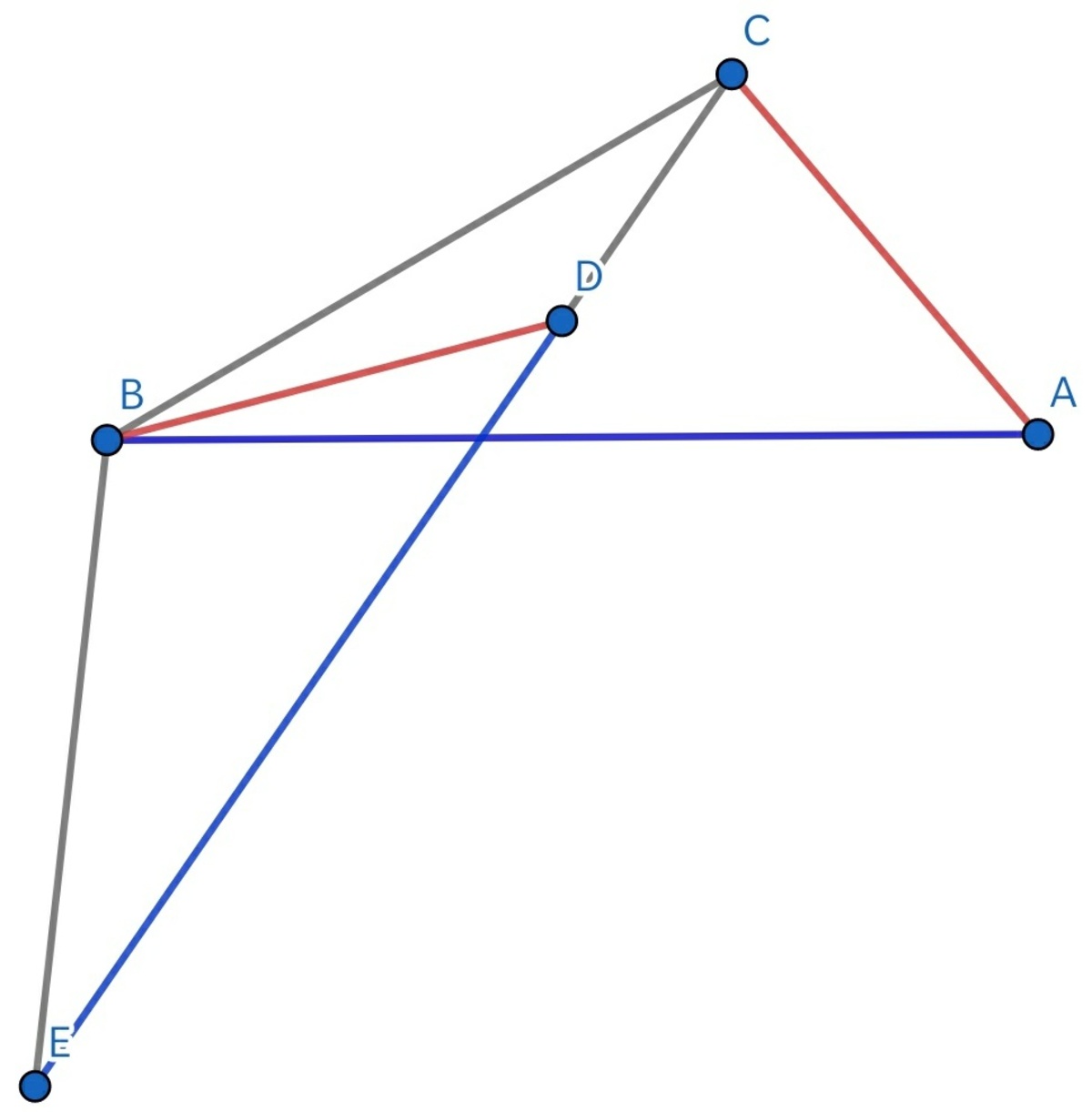Problem inside the triangle
The point D inside the △ A B C is such that A C = B D , ∠ D B C = 2 0 ° , ∠ D C B = 3 0 ° , and ∠ C A B = 5 0 ° . Find the measure of ∠ D C A in degrees.
The answer is 70.
This section requires Javascript.
You are seeing this because something didn't load right. We suggest you, (a) try
refreshing the page, (b) enabling javascript if it is disabled on your browser and,
finally, (c)
loading the
non-javascript version of this page
. We're sorry about the hassle.
2 solutions
If you fold the smaller triangle up, it forms a trapezium, two upper angles are equal, and so are the lower two (because equal non-parallel sides), the lower two both are 50 degrees, so the sum of upper two becomes 260, both become 130 each. By folding the triangle up, 130-2(30)= 70 degrees was left the other angle, tried to avoid paper and got it wrong, that was my strategy though.
Let θ = ∠ D C A , a = B C , and b = A C = B D .
By the angle sum of △ B C D , ∠ B D C = 1 8 0 ° − 2 0 ° − 3 0 ° = 1 3 0 ° , and by the angle sum of △ A B C , ∠ A B C = 1 8 0 ° − 5 0 ° − ( 3 0 ° + θ ) = 1 0 0 ° − θ .
By the law of sines on △ B C D , a sin 1 3 0 ° = b sin 3 0 ° , and by the law of sines on △ A B C , a sin 5 0 ° = b sin ( 1 0 0 ° − θ ) .
Since sin 1 3 0 ° = sin 5 0 ° , b sin 3 0 ° = a sin 1 3 0 ° = a sin 5 0 ° = b sin ( 1 0 0 ° − θ ) , so that sin 3 0 ° = sin ( 1 0 0 ° − θ ) , which solves to θ = 7 0 ° for 0 < θ < 1 8 0 ° .
Construction: Extended line segment C D to a point E such that A B = D E . Also join points B and E to create △ B D E Since
∠
D
B
C
=
2
0
°
and
∠
D
C
B
=
3
0
°
, by
exterior angle theorem
it follows that
∠
B
D
E
=
5
0
°
.
Since
∠
D
B
C
=
2
0
°
and
∠
D
C
B
=
3
0
°
, by
exterior angle theorem
it follows that
∠
B
D
E
=
5
0
°
.
Observe that △ A B C ≅ △ D E B as A B = D E , A C = B D and ∠ C A B = ∠ B D E = 5 0 ° . This gives us B E = B C ⟹ ∠ B E D = ∠ B C D .
We finish it off with some simple angle chasing. Let ∠ D C A = α ⟹ ∠ D B A = 8 0 − α due to angle sum property of △ A B C . Also, ∠ D B E = ∠ A C B = α + 3 0 ⟹ ∠ B E D = 1 0 0 − α due to angle sum property of △ D E B . Therefore, α = 7 0 ° as we have already deduced that ∠ B E D = ∠ B C D = 3 0 °
Therefore, the required angle α = ∠ D C A = 7 0 °